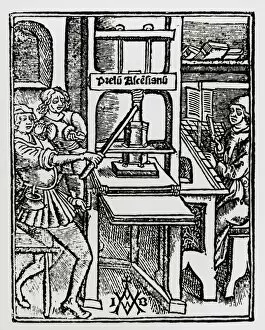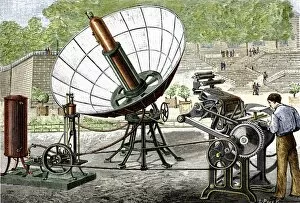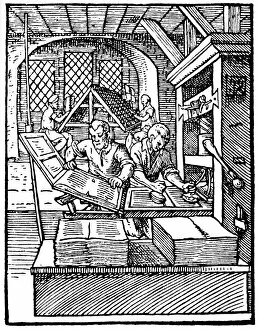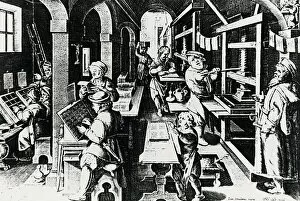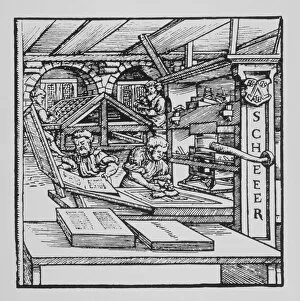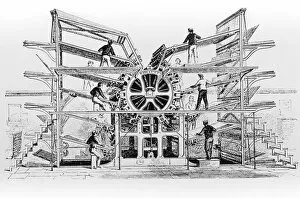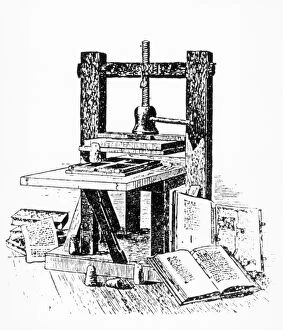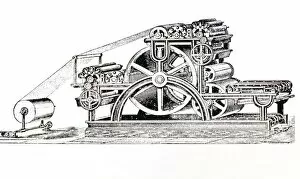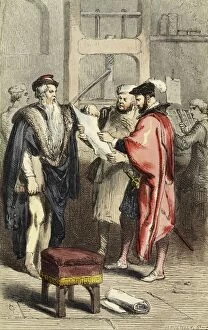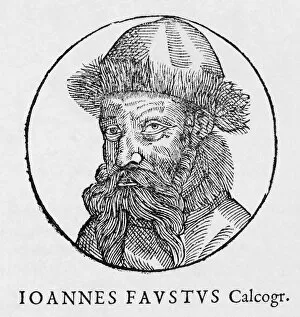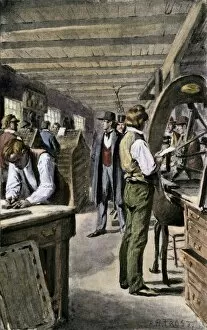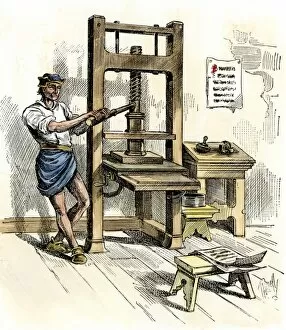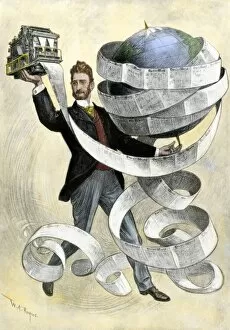Printing Press Collection (page 9)
"The Evolution of Printing Press: From Gutenberg to Modern Times" In the 1450s, Johannes Gutenberg revolutionized the world with his invention of the printing press
For sale as Licensed Images
Choose your image, Select your licence and Download the media
"The Evolution of Printing Press: From Gutenberg to Modern Times" In the 1450s, Johannes Gutenberg revolutionized the world with his invention of the printing press. This ingenious device allowed for mass production of books and paved the way for a new era of knowledge dissemination. Fast forward to the 1800s, and we witness another milestone in printing technology with the introduction of the cylinder printing press. This innovation further increased efficiency and speed in producing printed materials. Benjamin Franklin, known not only as a U. S. Statesman but also as a scientist, utilized a unique printing press during his lifetime. His contribution to this field exemplifies how individuals from diverse backgrounds can leave their mark on history. Today, antique printing presses serve as reminders of our rich heritage in print media. These beautifully crafted machines tell stories through their intricate mechanisms and timeless designs. One such example is BUSN2P-00001 - an iconic symbol representing countless hours spent perfecting each detail to create flawless prints that captivated readers worldwide. Imagine peeling away a sheet of paper imprinted with letters ABC and an elegant flower motif - capturing both simplicity and beauty within one piece. Transport yourself back to early 1900s London when newspapers like The Daily Telegraph were printed using massive machinery that brought news into people's homes every day. The Bureau of Engraving and Printing in Washington D. C. , showcased its prowess by employing steam-powered banknote printing presses in 1890. These impressive machines ensured secure currency production while embracing technological advancements. Delve even deeper into history, where copper plate printers meticulously engraved images onto plates for reproduction purposes – an art form preserved within Whitehall's Book of Trades from 1807. Witnessing numbering machines at work within banknote printing presses highlights precision engineering combined with artistic finesse - safeguarding currencies against counterfeiting threats since time immemorial. And finally, let us not forget those who worked tirelessly behind the scenes.

